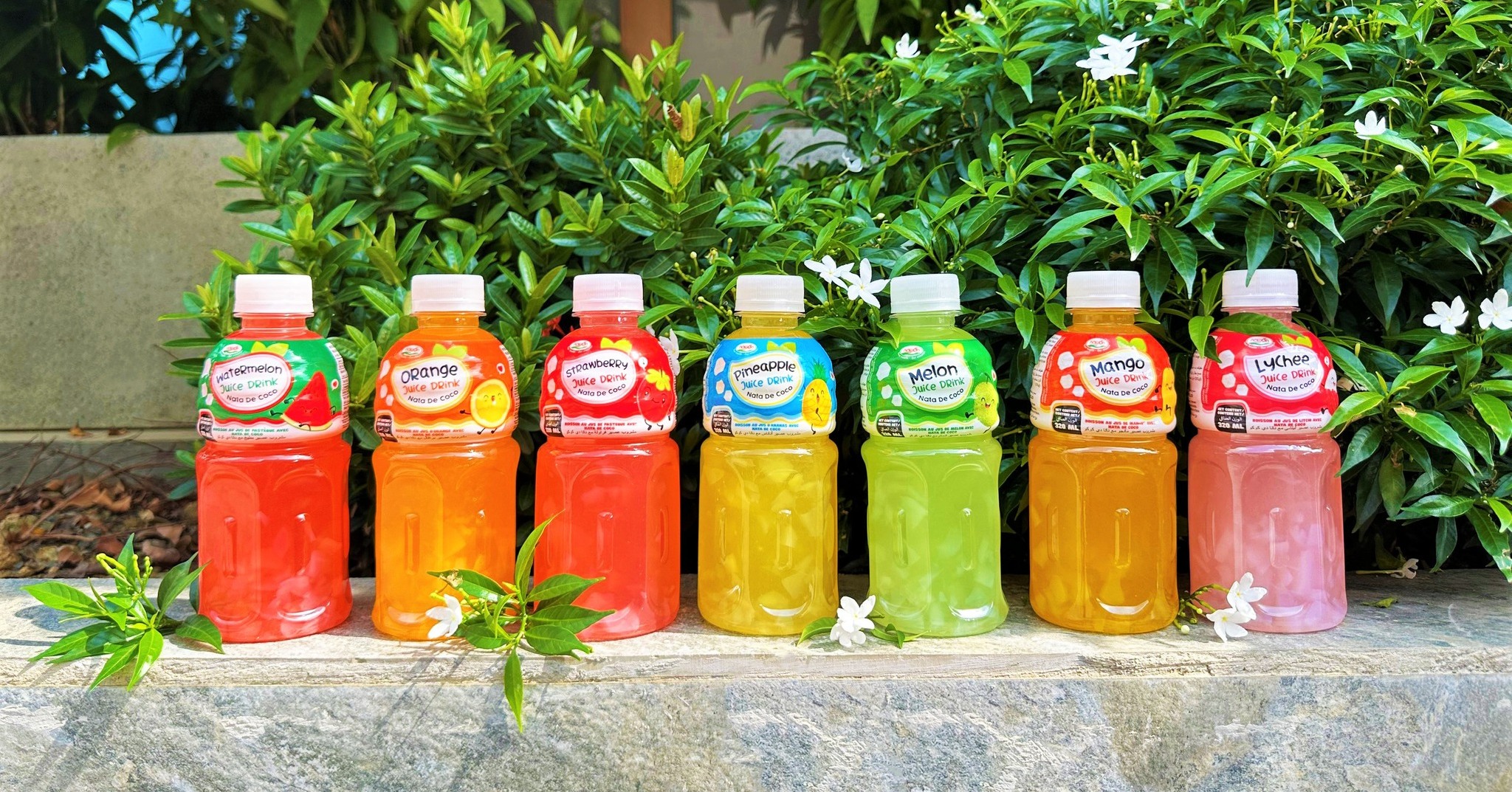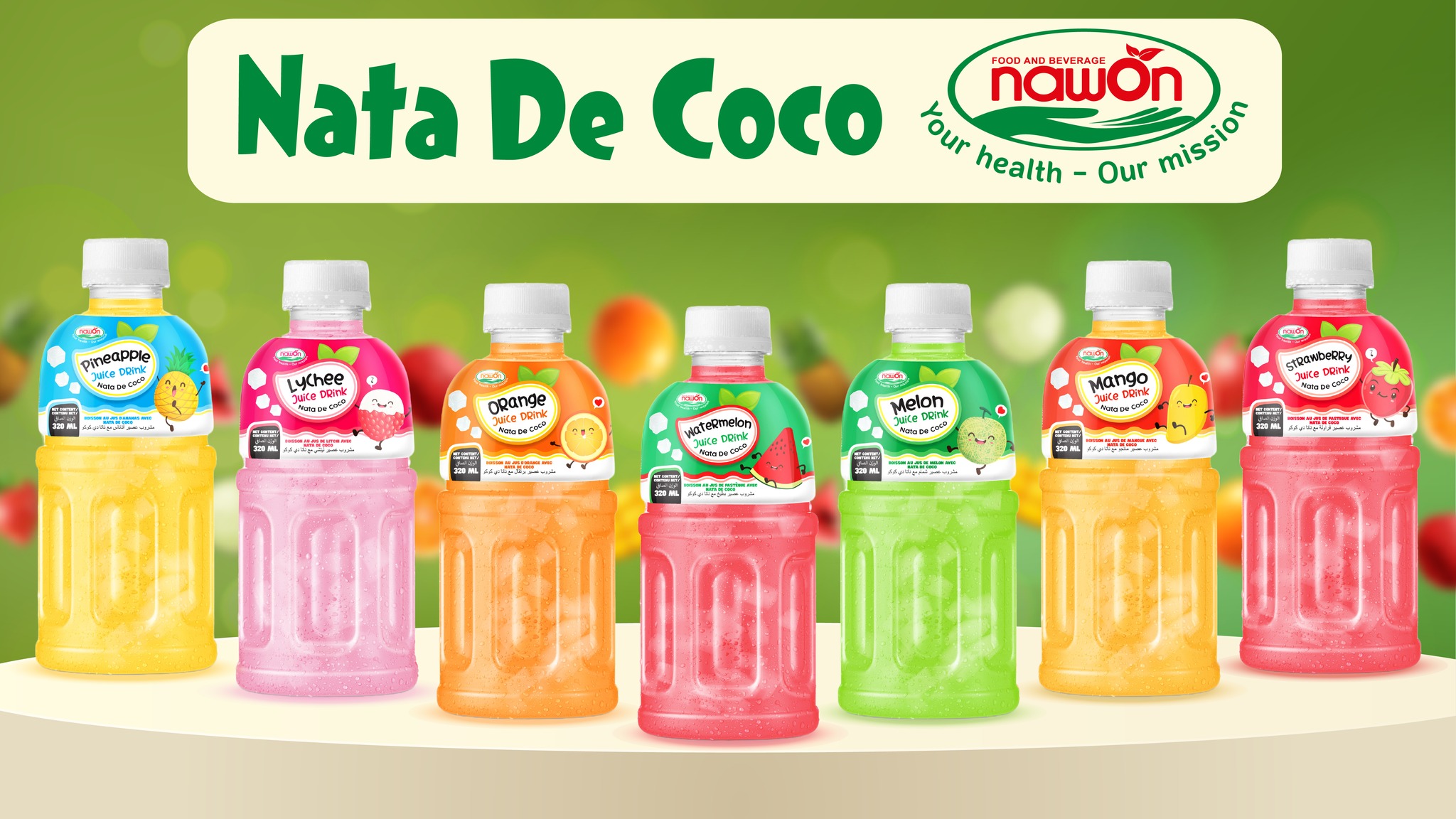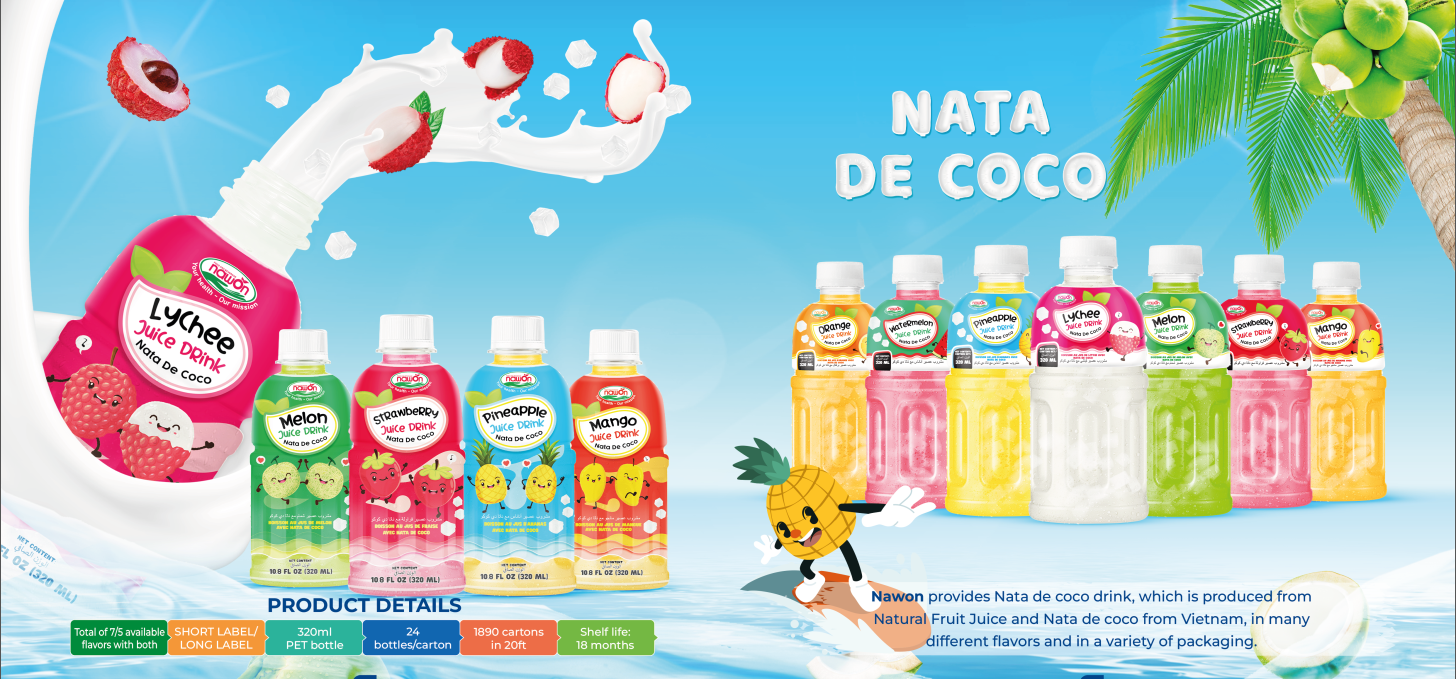Nata de coco drink is the spotlight in the beverage industry. With endless health benefits and good taste, nata de coco drinks not only attracts children but also adults. Many concerns about where to buy nata de coco drinks and which brand I should take. This article will shed the light and answer your concerns.
Firstly, let us examine the definition of nata de coco drink and what are the benefits of drinking nata de coco.

1. What is nata de coco?
Originally known as “nata de coco,” this drink now comes in a variety depending on where the raw ingredients are sourced. Millions of tiny cellulose threads make up the substance known as nata de coco, which eventually turns solid white or transparent. The body benefits from the dietary fiber in nata de coco because it is necessary and crucial for digestion. In addition to being a good source of dietary fiber, nata de coco also helps to heal wounds. For instance, nata de coco can be further treated to create a brand-new material that is extremely durable, heat-resistant, flexible, and even able to transmit light.
2. What are the benefits of drinking nata de coco?
General Health Benefits:
Due to its cellulose concentration, nata is a good source of insoluble dietary fiber. The nutritional breakdown of nata de coco is as follows: 98% water, 0.2% fat, 0.012% calcium, 0.002% phosphorus, 0.0017% vitamin B3, 51 mg sodium, 280 mg potassium, and 2.46 mg vitamin C per 100 g. This product contains a lot of fiber, including soluble fiber, lignin, and cellulose (2.5%), among other types. A food item is considered functional if it not only includes nutrients but also has the ability to increase or lower one’s health and well-being or risk of getting a disease. Nata can be categorized as functional food using this definition.
1. Control biological processes:
A long-chain saturated fatty acid with 16 carbons is called hexadecanoic acid (palmitic acid). It makes up between 20% and 30% of all fatty acids in the body, making it the most prevalent saturated fatty acid. Palmitic acid conducts a number of important biological roles at the cellular and tissue levels [28]. A study found that BC strongly inhibits -amylase in an in vitro chyme model. It can also adsorb a sizable amount of glucose according to its affinity for glucose molecules. As a result, BC can control blood sugar levels and be utilized as a dietary supplement by those who have hyperglycemia [29]. Additionally, BC is crucial for boosting cellular adhesion, which aids in tissue re-epithelialization.
2. Antifungal and antimicrobial properties:
Nata contains a range of fatty acids, including hexadecanoic acid (palmitic acid), a 16-carbon long-chain saturated fatty acid (FAs). The development of FAs as next-generation antibacterial medicines for the treatment of a wide range of bacterial infections has been demonstrated to be incredibly promising. The antifungal effects of benzeneacetic acid (phenylacetic acid) are well established. This substance fully stopped the growth of various soil-borne phytopathogenic fungi and has a broad antibacterial range. Hexadecanoic and tetradecanoic acids exhibit antibacterial properties against germs that are resistant to many drugs.
3. Control of plasma cholesterol levels:
Myristic acid, a long-chain saturated fatty acid with 14 carbon atoms, is also known as tetradecanoic acid. The nutmeg plant’s acid is first taken out. In the Mediterranean population, it is associated with low plasma HDL cholesterol levels. Consuming nata de coco can lower blood total cholesterol levels in hypercholesterolemic women.
4. Healing wound:
Bacterial cellulose, a naturally occurring material that resembles gel, is created by A. Because of its superior mechanical strength and ability to store a lot of water, xylinum is frequently used in wound dressings. By enhancing the permeability and preservation of the new tissue, wound dressings can hasten the healing of the wound. In the treatment of skin cancer, bacterial cellulose has also been employed as an alternate carrier of C60, a powerful photosensitizer for photodynamic therapy, in the form of a multipurpose wound dressing.
5. Contribution to the prevention and cure of cancer:
Dietary fiber may be a key factor in preventing colon cancer, according to the results of numerous epidemiological and experimental research [41]. According to multiple studies, BC’s capacity to absorb and transport medications makes it an appropriate substance for the treatment of different tumors [42]. Additionally, a study’s findings suggest that BC-Garcinia mangostana extract may one day be employed as a contender for treating breast cancer biofilm [43]. As a result, there is still an opportunity for progress in nata’s ability to aid in the treatment and prevention of cancer.

3. Where to buy nata de coco?
Nata de coco is a good fiber source from organic plant sources. Therefore, Nata de coco drink is delicious and trending with various health benefits. Nawon has produced and launched Nata de coco drink to catch up with the healthy beverage trend.
What makes us different? Our Nata de coco drinks are produced by FRESH FRUIT JUICE and NATA DE COCO, which makes the taste of these drinks stand out from the crowd. We could guarantee that our nata de coco drinks are NEVER FROM CONCENTRATE AND ARTIFICIAL INGREDIENT. Our drinks have received much positive feedback from customers.
Currently, NAWON 320ml NATA DE COCO DRINKS are available in 8 flavors and 5 flavors in short label and long label, respectively. If you want to do your own brand, we could help you to produce Nata de coco drink with your logo and your label. In addition, you would receive a Free Sample and Free Design.


